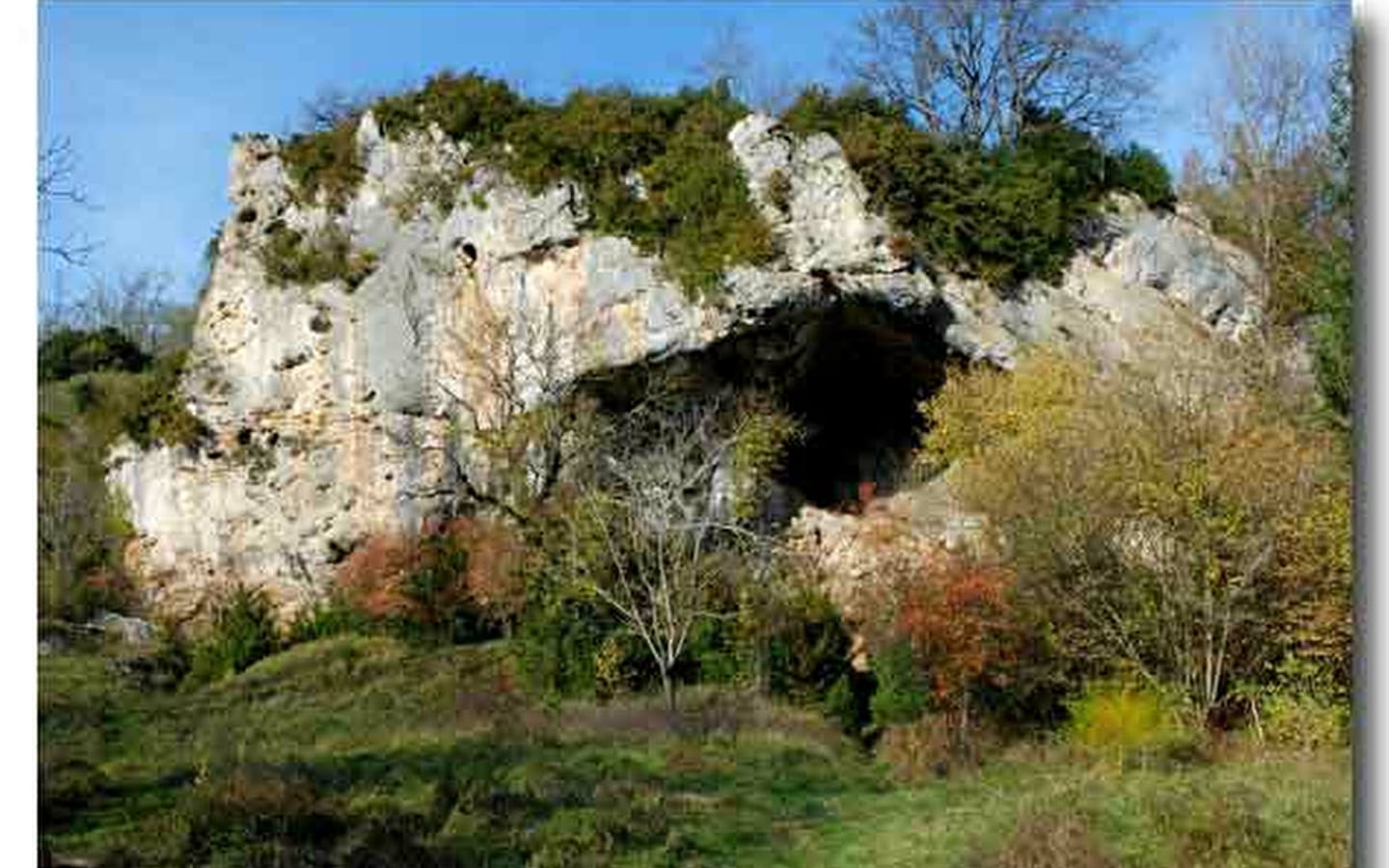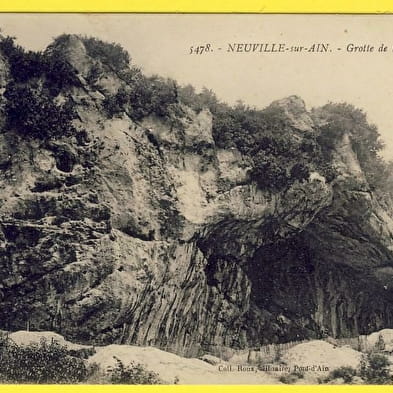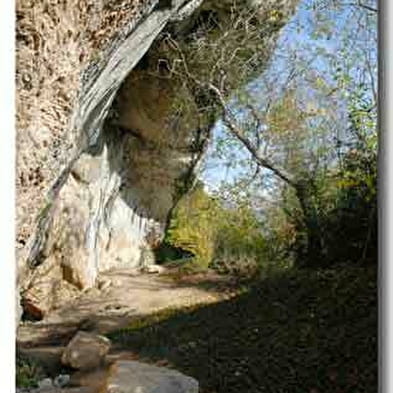
Grotte de la Colombière
Sometimes called the Colombière shelter or the Colombière under-rock shelter, this modest cavity is famous for the archaeological heritage it contains and for the excavations that took place there throughout the 20th century.
The site and the archaeological deposits were first reported in 1867. Then in 1913, the pharmacist from Poncin, J. Pissot, and the science teacher L. Mayet began excavations. Their discovery was major: a series of 9 pebbles and 2 mammoth bones engraved with animal figures (and one human figure) dating back to the Palaeolithic. It is said to be a real "engravers' workshop". This collection is kept at the U.F.R. des Sciences de la Terre at the Université Lyon 1. In 1948, an American mission led by H.L. Movius brought to light a new engraved pebble. Classified as a Historic Monument, it is kept in the Brou Museum in Bourg-en-Bresse. Following carbon dating, the age of the pebbles is estimated at -16,000 years, corresponding to the Magdalenian culture. A document on the discovery of the Grotte de la Colombière is available at the Tourist Office.
The advantage: the Colombière shelter is accessible for small legs. Free hiking map.
- Pets welcome









